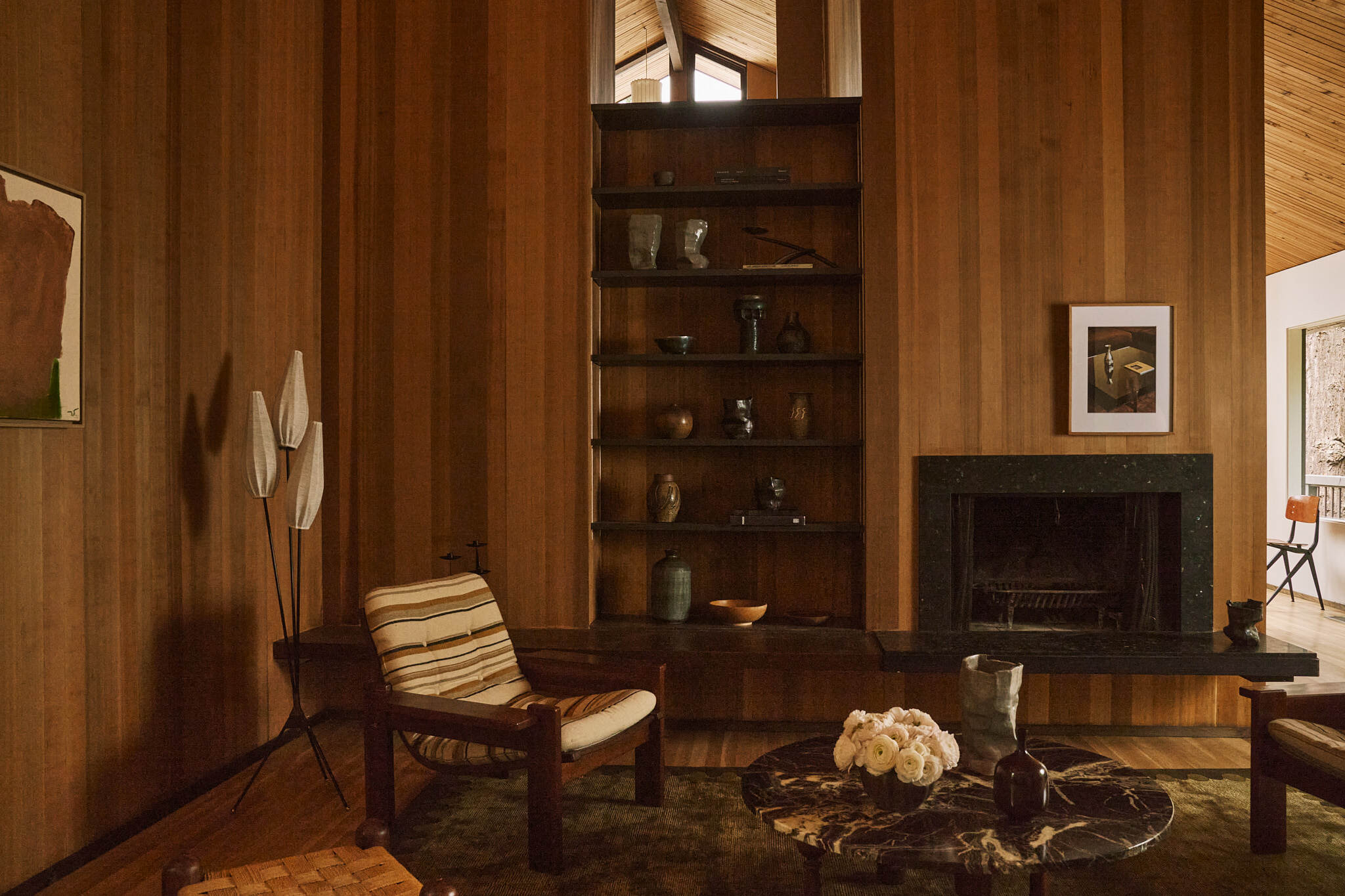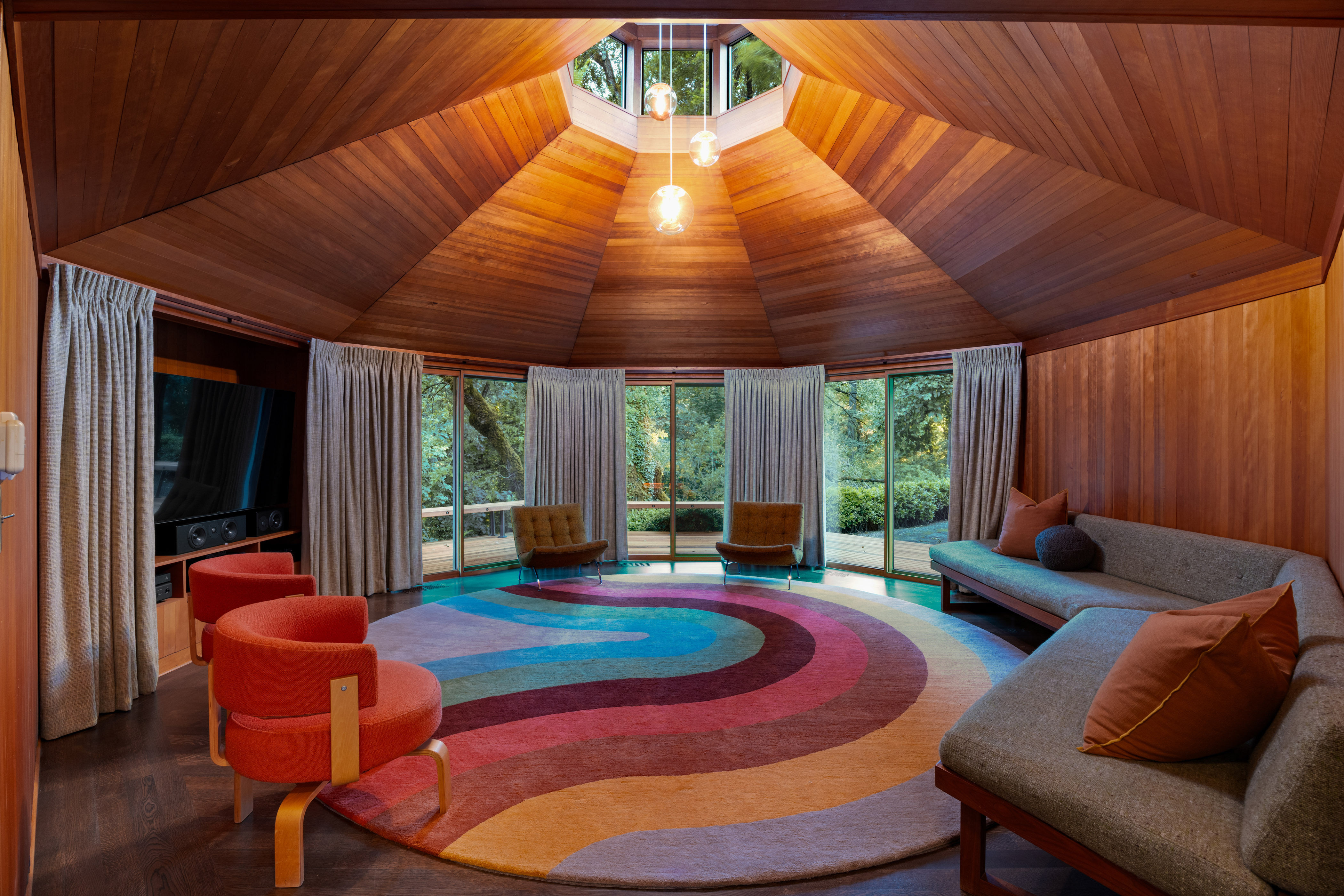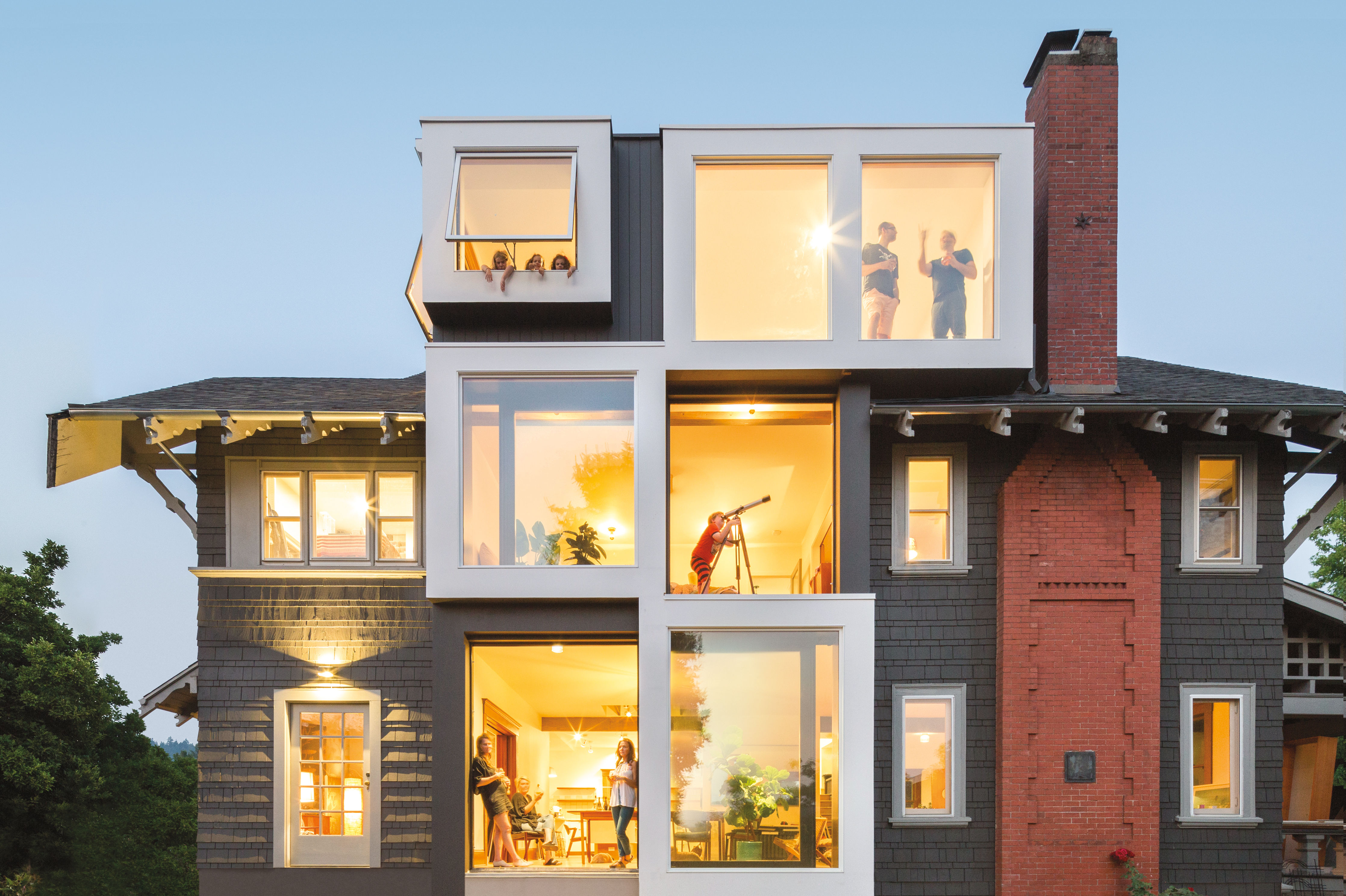
Portland Architecture Firm Beebe Skidmore Finds Beauty in the Unexpected
When is a window more than a window?
Heidi Beebe and Doug Skidmore seem to know the answer intuitively.
Take the square-shaped dormer window the Portland architects—partners in life as well as design—added to the front of a circa-1910 Portland bungalow on SE Stephens Street during a remodel. The window delivers natural light to not only the ground-floor living room but also to the upstairs hallway and bedrooms. The architects removed a wall to make the house’s upper hallway more like a mezzanine. Because of the dormer’s elongated shape, staring through it horizontally from upstairs creates an optical illusion: the sensation you’re looking upward instead of across.
“There’s an economy to that move,” Skidmore says. “If we give them a dormer, it needs to deliver light to two or three spaces instead of one.” A working title for the project at one point, coined by the owners, was “Operation Sunlight.”
But the dormer provided more than just clever two-for-one illumination. Viewed from the street, the square window is a striking, maybe even unapologetic contemporary addition to an otherwise historic home. “You can remodel one little part of the house and change the whole thing,” Beebe says. It’s very different from just about any other vintage-home restoration one’s likely to see around Portland (where there are many such); usually, no matter how radically the home is expanded or updated, the exteriors ape its original style. Not so with Beebe Skidmore Architects’ work: the firm, whether renovating a home or a warehouse, takes pride in honest expression.
“We like juxtaposing old and new next to each other,” Beebe says.
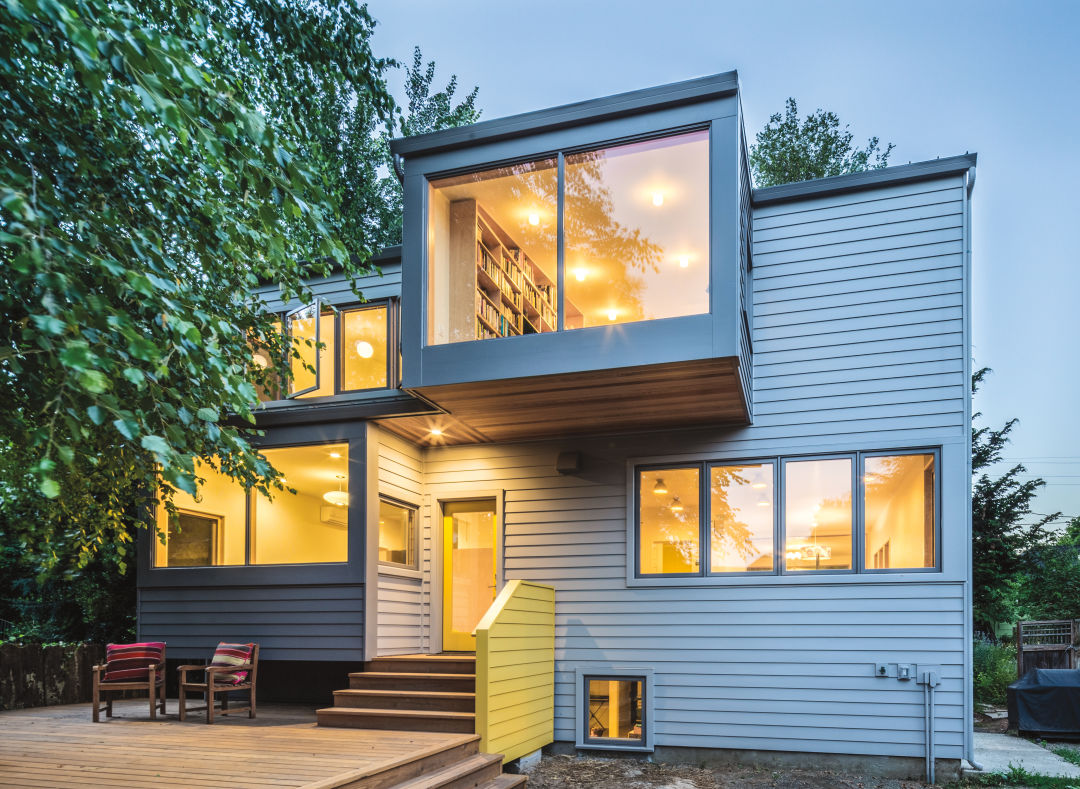
SE Stephens Street’s “Newer Older Bungalow”
Image: Courtesy Caitlin Murray
Though Beebe Skidmore marks its 10th anniversary in 2017, until relatively recently the firm was all but unknown here. At first, the two principals focused on modest residential remodels; many of their commissions were in Boise, Idaho, Beebe’s hometown. Compounding that relative local anonymity, the couple left Portland from 2010 to 2014 so Skidmore could earn his master’s of architecture at Detroit’s prestigious Cranbrook Academy. When an expansion of a circa-1910 Boise foursquare home (which, like the Stephens Street project, fused old and new) landed in Dwell magazine in 2012, the phone started to ring. “We only added 12 feet to the back of that house,” says Beebe, who studied architecture at Princeton. “But it went a long way.” Over time, the firm began gaining steam with a succession of commissions in Oregon and Idaho, including larger projects like a restoration of downtown Boise’s historic Owyhee building.
The couple also caught clients’ attention because of pedigree. They met in 2001 while working at Portland’s most prestigious architecture firm, Allied Works. Led by Brad Cloepfil, Allied has designed internationally renowned projects like New York’s Museum of Art & Design, an expanded Seattle Art Museum, Portland’s acclaimed Wieden & Kennedy headquarters, and the Clyfford Still Museum in Denver. While both loved the chance to work on high-budget, large-scale cultural institutions, they also felt constrained by their Allied Works roles.
“We were a little typecast,” Beebe says. “I tended to do more project management, and Doug was more of a designer. But it wasn’t reflective of how we worked. We’d go to a meeting and someone would compliment me on a strategy, and the idea would have been Doug’s.”
“Likewise,” Skidmore adds, “there would be a design move I’d introduce in a meeting and it would be Heidi’s.”
The couple quit Allied Works in 2007 on the same day, intent on forming their own firm. Today, Skidmore tends to focus on nitty-gritty design details while Beebe interacts with clients and acts as a voice for functionality. But it would be a mistake to call those roles definitive. They constantly bounce ideas off each other.
It wasn’t just that they wanted to avoid typecasting. While Allied enjoys a first-rate reputation, with a succession of award-winning projects, Beebe and Skidmore wanted their work to be, as Skidmore puts it, “a bit more lyrical, in the sense of looser problem solving.” They wanted projects and their environs to dictate the architecture, not the other way around.

From left: The Owyhee, a renovated former hotel in Idaho’s capital; Heidi Beebe and Doug Skidmore
Image: Courtesy Allison Corona and Courtesy Jessica Hill
The nascent firm’s biggest break came two years ago, when local developer Project^ hired the firm to reimagine a Slabtown awning-company warehouse for creative-class office workers—except it wasn’t really one warehouse, but five conjoined concrete-block structures built over several years, each with its own set of physical conditions. Then, after Beebe Skidmore was hired, the plan for a cluster of small individual office spaces for different tenants was scrapped and the project instead became one 30,000-square-foot headquarters for local branding agency Swift. Accepting changing conditions, as well as fusing the decaying concrete-block buildings with glassy additions, called for just the kind of “loose” problem solving the couple yearned for.
“Their creativity is second to none,” says Tom Cody of Project^, the Swift building’s developer. Just as important, he adds, the pair can adapt when conditions change. “You have to be flexible,” Cody says of projects like the warehouse conversion. “You rip things apart and discover they weren’t as you thought. You have to move windows or skylights. Not all architects can take that in stride.”
Instead of placing new windows symmetrically in the middle of the old structures’ existing walls, for example, Beebe and Skidmore moved them to where the concrete was strongest. When Swift needed to substantially increase the available square footage, the couple added a new triangularly shaped mezzanine that mimicked the form of an existing sawtooth skylight. Most of all, the architects created a dazzling sense of kinetics, with glass cubes jutting in and out of the old warehouse walls like some three-dimensional Tetris game come to life.
“The concrete block became this practical and beautiful contrast to these new light boxes that could connect people inside to what is outside,” Cody says. “I think the reason they’re successful is they can really distill architecture to one simple, powerful idea.” After completion, the Swift headquarters won top honors at the American Institute of Architects’ annual Design Awards.
Today Beebe Skidmore finds itself increasingly busy, but the pair try to keep the firm small and lean. Dial their office number and it will likely be Doug or Heidi who answers, each exhibiting a kind of easygoing attitude that stands in contrast to the stereotypical acclaimed Type A architect.
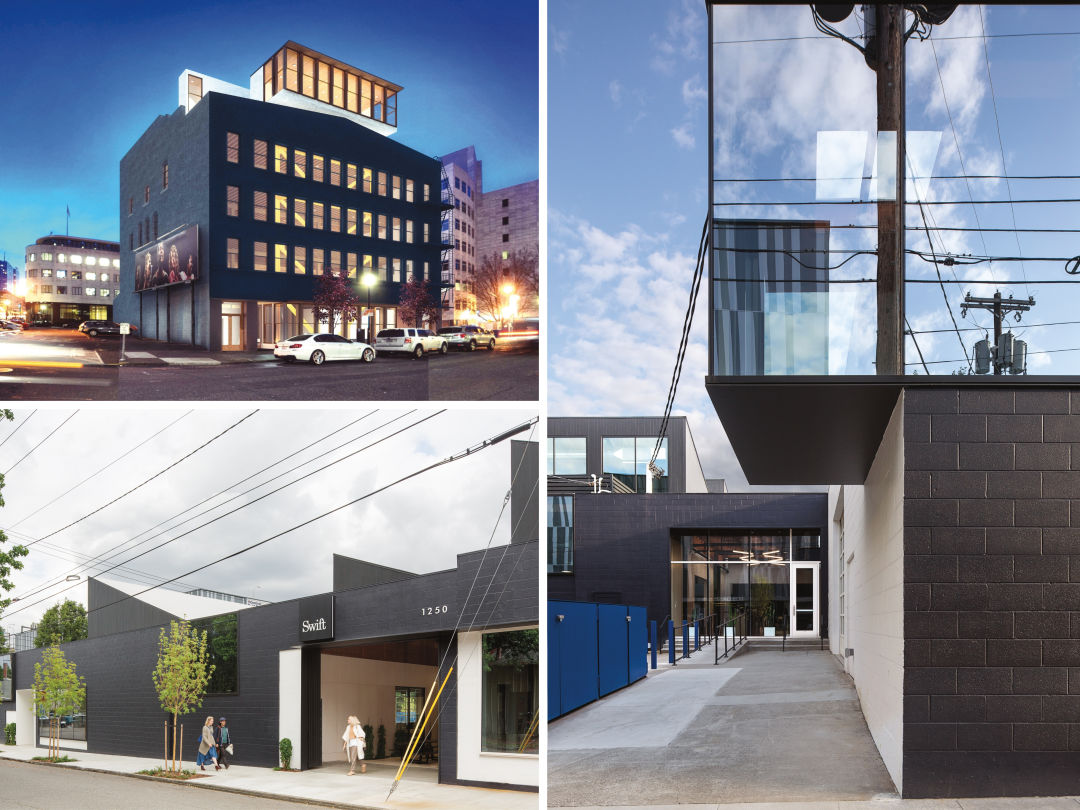
Clockwise from top left: A rendering of downtown’s renovated Modish Building, slated for completion in 2018; Beebe Skidmore’s offices for creative agency Swift
“We don’t want to just build a business,” Beebe explains. “We want to be able to work on designing all our projects and not just delegate. And we don’t want to just accept low-aspiration projects to pay the bills.”
Although Beebe Skidmore maintains a robust presence in Boise, where projects like the sizable Watercooler live/work apartments are currently under construction, the firm’s ambition can be most clearly seen in two Portland projects now in progress.
Glance at another Southeast Portland residence from the front, and you see its circa-1914 Craftsman architecture. But move to the side of the house, and the whole traditional wood façade disappears in favor of glass cubes pulling a bounty of light into the house. (See top photo.) “We wanted to honor the heritage of the house and respect the neighborhood, but it was so dark inside,” says homeowner Arrow Kruse. “Now every floor has abundant light, and the sliding doors allow indoor-outdoor living.”
Beebe Skidmore’s renovation and expansion of the Modish Building, a four-story 1907 downtown commercial structure on SW Park Avenue between Stark and Oak Streets, breaks the rule followed by just about every other such project in town. Instead of its new fifth-floor penthouse being tucked toward the back of the building so as to remain largely unseen from the street, it’s cantilevered over the sidewalk, as if the original four stories of architecture are just a platform for what Skidmore calls a “floating gem” on top.
These projects grab the eye, yet it would be wrong to say Beebe Skidmore is ego-driven. Every move arises from need—usually for light and openness—and a reflection of the journeys this tight-knit architecture team takes alongside its clients. “It’s not about producing an oeuvre, or forcing some kind of an idealized architectural form,” Skidmore says. “It’s about how people move through space, and tailoring the design to those needs.”

